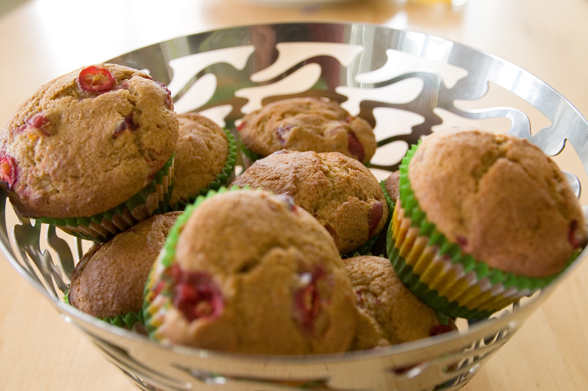Winter Squash
Posted by admin | January 27, 2010 | Filed under: Ingredients
One of my family’s favorite tales to rehash time and time again takes place while we were camping in an extremely crowded national park–tents cheek and jowel so that every noise your neighbors made could be easily overheard. On this fateful night, my Dad, in the throes of some all-too-vivid dream, leapt from his sleeping bag and proceeded to attempt to climb the tent pole outside of our shelter. Blame it on exhaustion or on having an exaggerated sense of culinary guilt, but his horror of horrors this night was summed up in his chorus: “It’s the Squash! I can’t cook it!” Over and over he proclaimed this horror, waking up more and more of our fellow campers. He was consumed by some deep frustration with preparing one of winter’s most delectable offerings. “The squash! I can’t cook it!”
Perhaps you feel similarly?
To be sure, squash is not sexy. Just say the word, and you can’t help but smile to yourself, or feel a little sorry for its sometimes warty, rippled, or pock-marked exterior.. But move beyond our unfortunate English moniker, and try on the smooth Italian “zucca” for size–big brother to the diminuitive “zucchini”–and now we’re dealing with a very stylish ingredient indeed. Highly underrated, and even more highly nutritious, squash is a versatile and tasty canvas for a whole range of tasty applications.
Preparation
Roasted squash is one of my favorites. Caramelizing the naturally occurring sugars, it’s a simple cooking technique that really makes squashes shine. Squash is also one of the few vegetables–or few foods of any kind, for that matter–that cooks well in the microwave. Halve a squash, scrape out the seeds, throw in some olive oil or butter (you naughty little vixen, you!) and salt-n-pepper of course, and set it on high for ten minutes or so. Check on it. If it’s not cooked, cook it some more. Squash is pretty resilient, and won’t become inedible if you cross the line beyond just done.
Storage
Among the winter squash’s most appealing qualities is its longevity. You can pick up a squash from the farmers’ market in October and, if it’s kept in a cool, dry spot it will still be ready to eat when the first crocuses come up. No refrigeration required. So unlike other veggies you may wish to try but don’t get around to before they’re composting in your crisper drawer, a faded squash is the sure sign of a person who truly has no intention whatsoever of cooking it.
Selection
Thai pumpkin curry–red curry with tofu, coconut milk, and cilantro. The ubiquitous butternut squash soup, dressed up with chestnuts or bacon or whatever you desire. Roasted acorn squash halves with sage and an egg baked in each half during the last ten minutes of roasting. A harvest-time whole grain salad with farro, diced butternut squash, dried cranberries, and walnuts. Spaghetti squash (bake it and scrape out the spaghetti-like fibers with a fork) is a different and delicious, low-carb vehicle for the marinara or pesto that you froze back in August. Slightly more exotic, but totally delicious and worth trying out is the Afghan Kaddo Borani–roasted and cooled sugar pumpkin with sugar and cinnamon, a garlicky yogurt sauce, and a simple tomato/meat sauce with onion and garlic; truly a knock-out.
Moroccan tagines, homey purees, baked into a gratin with potatoes, as a filling for ravioli–made out of wonton wrappers and bathed in brown butter–yum! Or take that soup into a new direction with some apple or pear and parsnips thrown in.
It all comes down to one of my favorite mantras in the kitchen–“what’s the worst that can happen?” Perhaps you have to throw a failed experiment out and start over again, but if your root cellar is stocked with a range of winter squash, before long you’ll be a pro who can confidently explain to my Dad just how to cook it. And maybe even coax him down from the tent pole.






